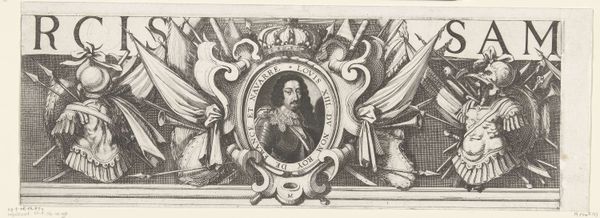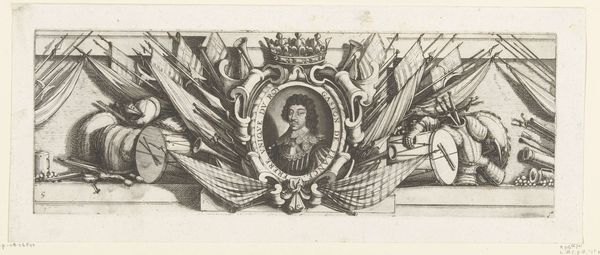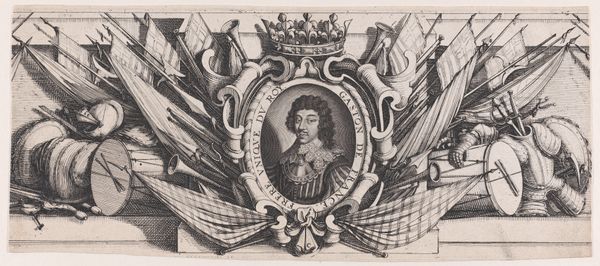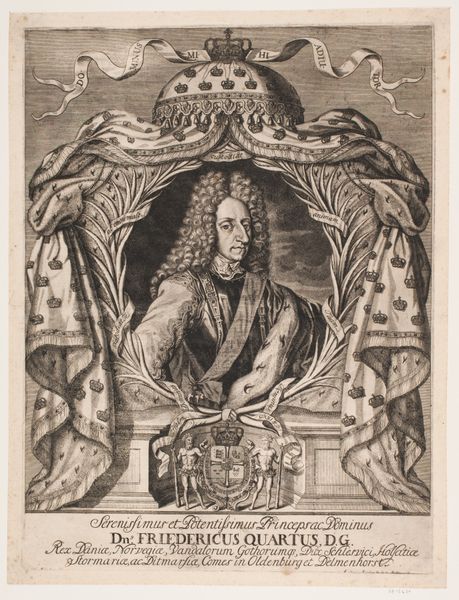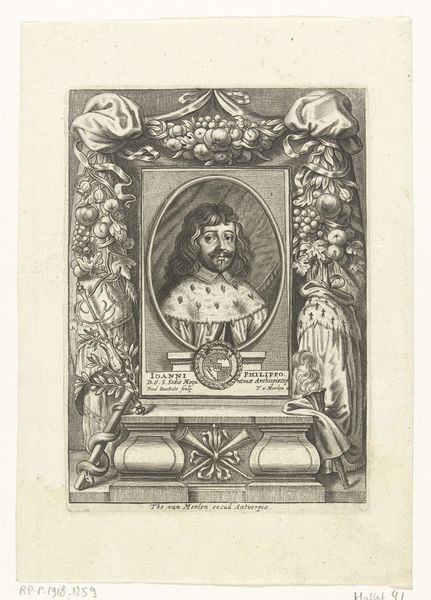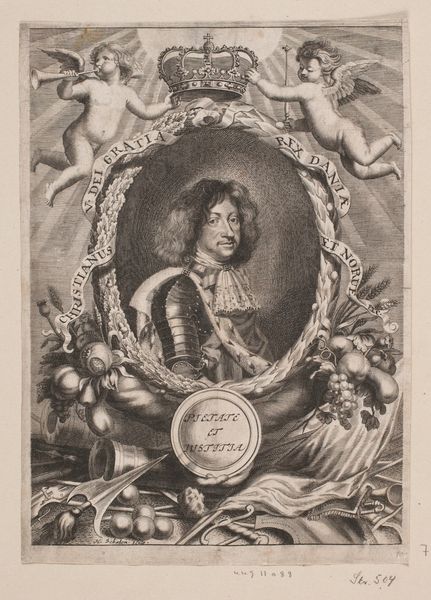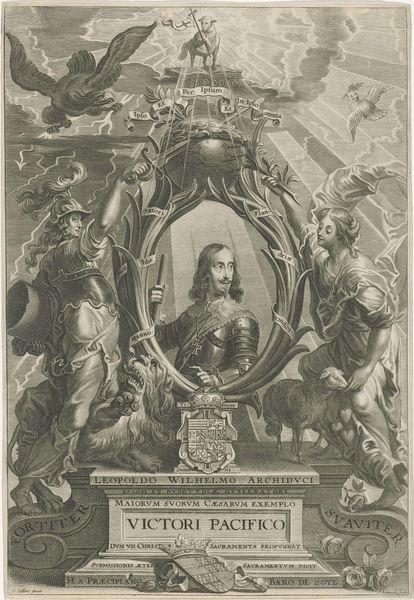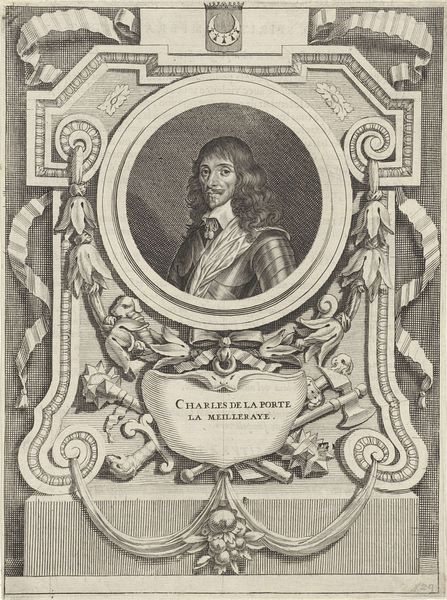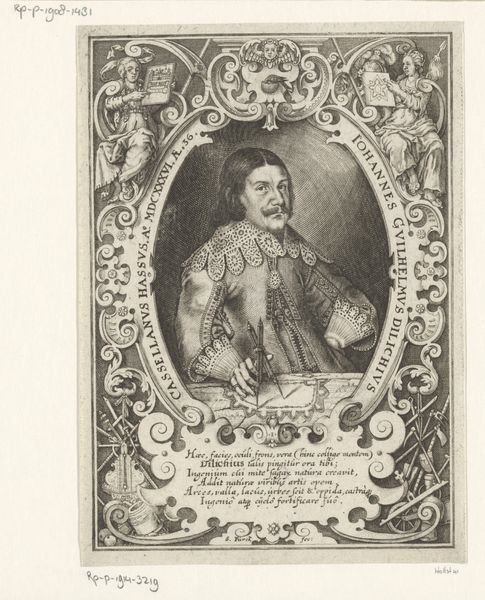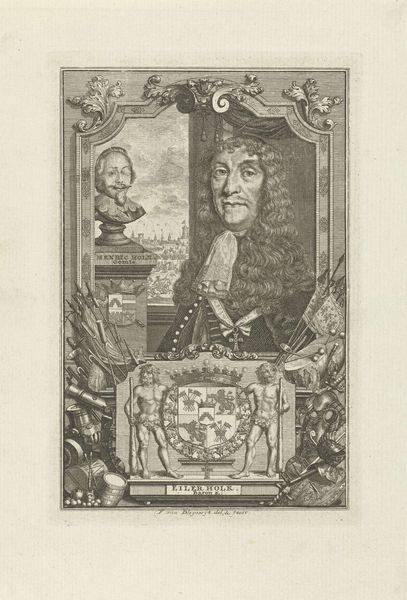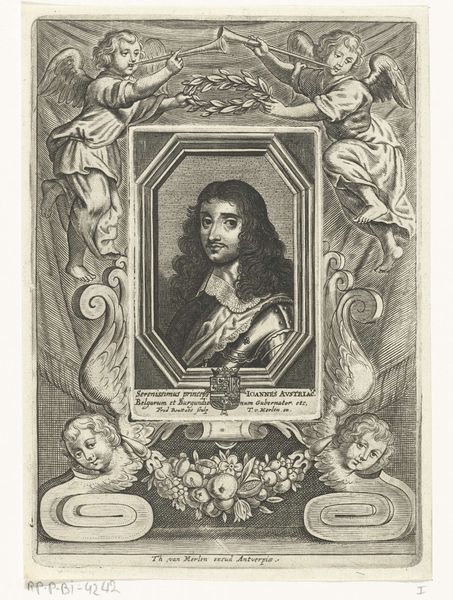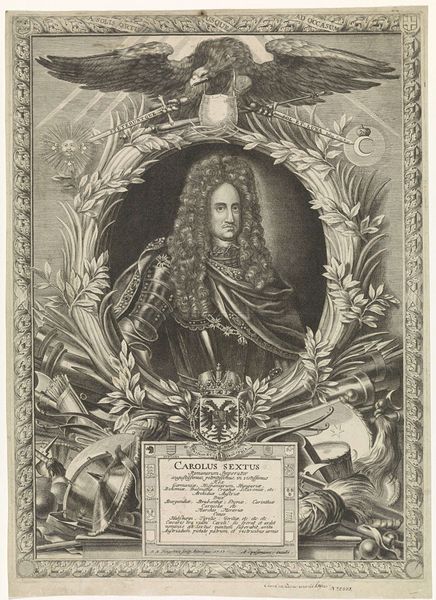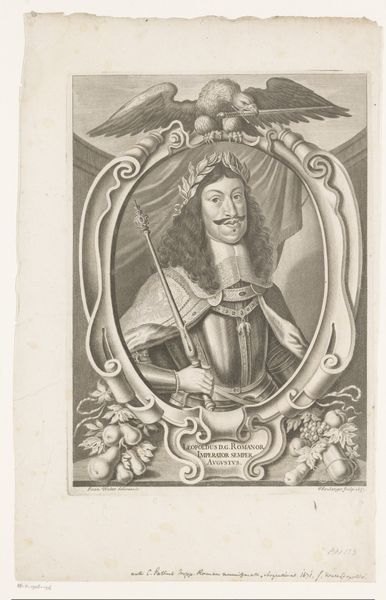
Beleg van La Rochelle, september 1627-oktober 1628 (randwerk, deel middenboven) 1628 - 1631
0:00
0:00
drawing, print, ink, engraving
#
portrait
#
drawing
#
baroque
#
pen drawing
# print
#
pen illustration
#
pen sketch
#
ink line art
#
ink
#
pen-ink sketch
#
pen work
#
history-painting
#
engraving
Dimensions: height 161 mm, width 457 mm
Copyright: Rijks Museum: Open Domain
Editor: So, this engraving is "Siege of La Rochelle, September 1627 - October 1628" by Michel Lasne, made sometime between 1628 and 1631. It's incredibly detailed, almost overwhelmingly so with all the ornamentation surrounding the central portrait. What strikes you about this piece? Curator: The level of detail is compelling, especially considering it’s an engraving. Look closely at the layering. Consider the labour involved in producing these incredibly intricate lines, the material production required of this piece for disseminating information about power and its supposed legitimacy during the conflict. How do you think that impacts our understanding of the siege itself? Editor: That's an interesting point. It feels almost propagandistic now that you mention it. It uses artistic labor, the skill of the engraver, to glorify… war? It's unsettling. Curator: Precisely. The very act of producing this print – the cost of materials, the time invested, the skill of the engraver - serves to reinforce the power structures it depicts. Think about who would have commissioned it, who had access to it, and the message they wanted to convey about French royalty. Editor: So, the print itself becomes a commodity, reinforcing class divisions, as much as it is about memorializing the historical siege. Did these kinds of prints function as luxury goods, or were they widely circulated? Curator: A little of both. Printmaking allowed for wider distribution than paintings, but quality engravings like these were still costly. They acted as a kind of aspirational material, reinforcing the values and visual language of the ruling class even as the masses gained exposure to them. How does examining the materiality change how we view history? Editor: I guess it shifts the focus from simply documenting the event to understanding the forces that shaped its memory and dissemination, revealing class interests that even shaped history! Curator: Indeed! By analyzing its means of production and consumption, we understand not just what happened, but *who* controlled the narrative and *how* their power was materially expressed.
Comments
No comments
Be the first to comment and join the conversation on the ultimate creative platform.
